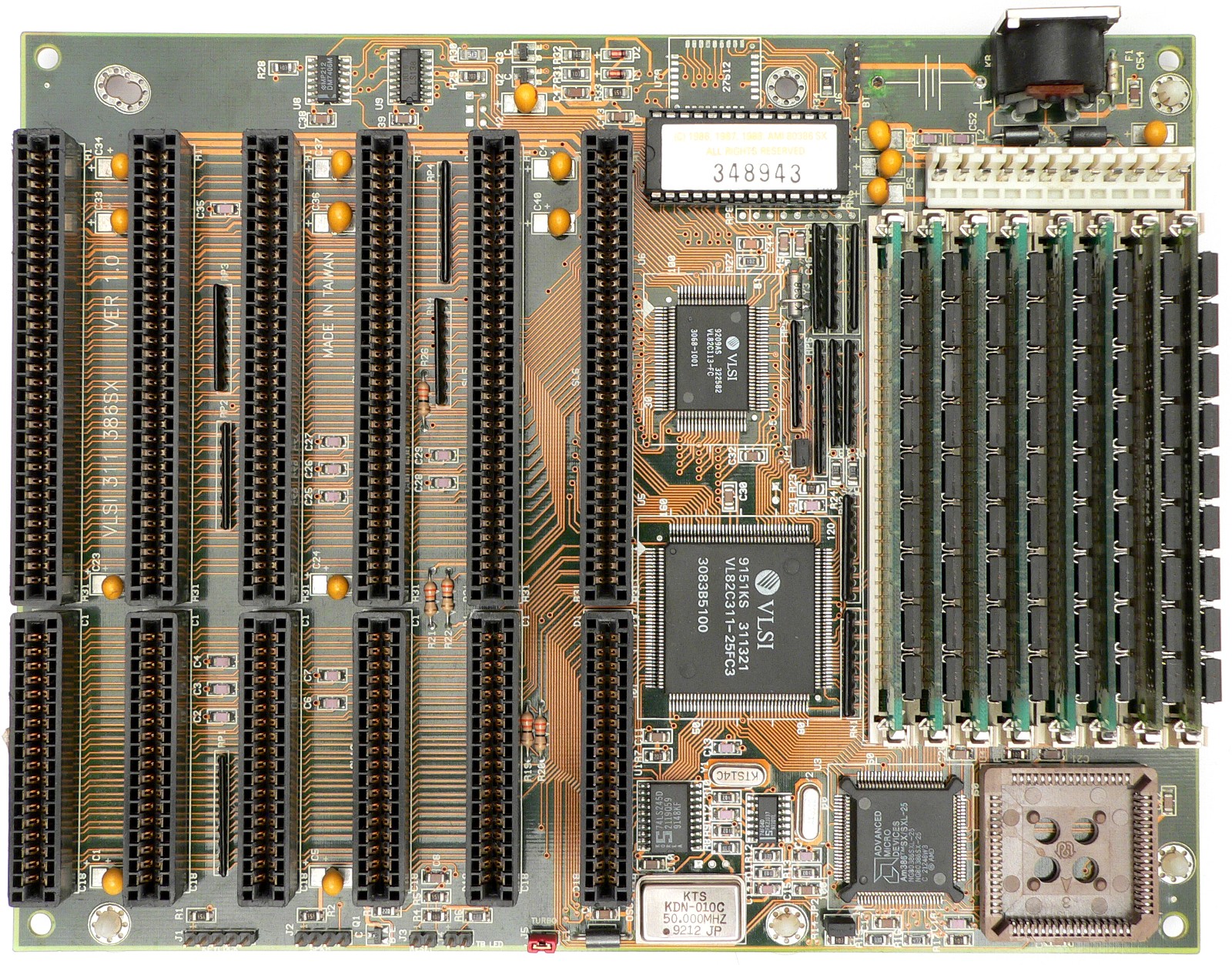derSammler wrote:Sorry to say, but that is just completely wrong.
Nope.
derSammler wrote:The 386sx performs like a 286. The only difference to a 286 is that it can execute 32-bit code and may have external cache. There are cases where a 286 at the same clock speed can even perform slightly faster than a 386sx.
That part is correct.
However, from there, you assume that because a 386SX is about the same performance as a 286, a 386DX has to be faster. This assumption is flawed.
Check out some instruction timing tables between 286 and 386, you'll see that most instructions are more or less the same speed on both CPUs. Sometimes the 286 is one or two clks faster(!), sometimes the 386 is. In the end, it's all marginal.
This one for example: http://aturing.umcs.maine.edu/~meadow/courses … -Set-Clocks.pdf
Or the 'opcodes.chm' file that can be found in MASM32.
derSammler wrote:The 386DX is a true 32-bit architecture, whereas the 386sx sits on a 16-bit bus and often outdated chipset, which makes accessing everything ouside the chip, including memory and fpu (if present), very slow.
We are talking about the PC architecture here, which is based around 8-bit chipsets from the 1970s.
The IBM AT wtih the 286 had a chipset that was actually clocked SLOWER than an XT., because they still made use of the same 8-bit chips from the 1970s (Intel 82xx series).
The 386 did not introduce anything new in terms of motherboard/chipset technology, aside from the 32-bit bus and caching. It's still the same AT logic, based on 1970s chips.
There may be some late 386 chipsets that are faster than the early ones, but even then, it's not like you're totally getting all that 32-bit goodness out of your CPU. You're still stuck to 8/16-bit port I/O, 16-bit ISA buses at 8 MHz, and a mostly useless DMA controller (and your video card, HDD controller etc all have to work via that bus). It wasn't until the introduction of VLB and PCI that chipsets could really make significant differences, because you now had actual 32-bit buses running at high clockspeeds, and there were new ways of performing DMA/bus mastering etc.
So yes, memory is faster *if* you run 32-bit code, because otherwise your instructions only access 16-bit words anyway, so half the bus is wasted.
And hardly anyone used an FPU (and as a result most software also didn't support it. Games certainly didn't), so that didn't factor into performance anyway, for most users.
derSammler wrote:There is no such thing as a "high-end 386SX board".
Sure there is. This board contains cache sockets. Most 386SX boards I've seen (including various OEM systems from brands like Commodore and Goldstar), did not. Being able to add cache is a high-end feature.
Boards like these are not high-end:

They're basically the same as 286 boards from that era, just a different CPU on them. Sometimes literally, since many chipsets are 286/386SX.
Maybe you've never seen one, doesn't mean they don't exist. You could have googled when I said they do exist, and you would have found them.
